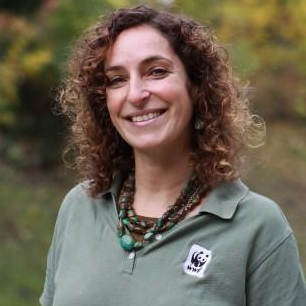Accelerating REDD+ Initiatives in Africa Using Remote Sensing
A special issue of Remote Sensing (ISSN 2072-4292). This special issue belongs to the section "Forest Remote Sensing".
Deadline for manuscript submissions: closed (15 September 2022) | Viewed by 8549
Special Issue Editors
Interests: remote sensing and earth observation; REDD+; climate change implications on forest carbon dynamics; forest degradation and monitoring
Special Issues, Collections and Topics in MDPI journals
Interests: drones; LiDAR; satellite remote sensing; tropical forests; forest management and modeling; individual tree detection; forest carbon science; machine learning; biodiversity conservation
Special Issues, Collections and Topics in MDPI journals
Interests: Reducing Emissions from Deforestation and forest Degradation (REDD+) measurement; reporting and verification (MRV) system; Remote sensing; Forest monitoring; Greenhouse gas (GHG) emissions from land use, land-use change, and the forestry sector
Interests: state-of-the-art climate research in Africa; land use land cover change; early warning systems; vegetation models for climate change impacts; high-performance computing and web technologies; climate finance; climate services
Interests: REDD+; Earth observation for conservation; Low-cost methods for tracking forest degradation; Remote sensing for forest monitoring, forest biomass and disturbance; Big data processing; Tropical forest research; Remote sensing with drones; Data fusion approaches for mangrove mapping
Special Issue Information
Dear Colleagues,
Forest degradation and deforestation contributes to more than 12% of global greenhouse gas emissions and thereby aggravates the issue of climate change. To address this, United Nations Framework Convention on Climate Change (UNFCCC) developed an international framework called REDD+ (reducing emissions from deforestation and forest degradation, conservation of existing forest carbon stocks, sustainable forest management and enhancement of forest carbon stocks) which encourages developing countries to reduce carbon emissions from forested lands, especially from tropical forested areas, by offering financial incentives based on targets achieved. Over the years, there has been a lot of developments to REDD+ – which include applications of remote sensing technology, in particular long term satellite imagery – however, questions still remain on whether REDD+ will bring transformational changes for combating climate change in the long run while upholding qualities of effectiveness, efficiency and equity.
Africa has over one-fifth of its area comprised of forests and houses one third of the world’s tropical forests, which underlines its importance in combating climate change through carbon sequestration. However, due to commercial logging, subsidence agriculture, collection of fuel wood, construction of dams, roads, etc. and cattle ranching, African forests are prone to extensive forest fragmentation, deforestation and degradation, which negatively affects their capability to absorb carbon. This further translates into the quality of life of local people and biodiversity as well. Therefore, the exigencies of a secure and sustainable economy demand probing into globally extrapolatable and easily accessible technologies such as remote sensing.
For addressing existing challenges and exploiting potential opportunities for accelerating REDD+ initiatives, advanced remote sensing strategies – such as Unmanned Aerial Vehicles, Multispectral, hyperspectral, LiDAR, GEDI, SAR, etc. – and sensor fusion approaches need to be further promoted. This special issue emphasizes on regional to national level case studies in Africa that apply Remote Sensing techniques for supporting REDD+ initiatives and we invite you to submit review articles as well as original articles that address one or more of the following topics:
- Low-cost remote sensing technologies for monitoring forest growth, deforestation and degradation
- Forest response to disturbances resulting from human activities (such as logging, urbanization), natural disasters (such as cyclones, forest fires) and climate change anomalies (such as reduced precipitation, increased droughts)
- REDD+ performance evaluation studies (this can be remote sensing based research that intersects areas of environmental policy, biodiversity conservation, land use land cover change, climate finance, forest economics, political sciences, public administration, international relations, etc.)
- Climate change mitigation strategies and carbon markets
- Aboveground biomass estimation and spatial modeling
- Feasibility of data fusion strategies (for example: combining SAR, GEDI, Landsat and/or UAVs) for improving forest mapping
- Applications of machine learning and artificial intelligence techniques for forest resource assessment
Dr. Inge Jonckheere
Mr. Midhun (Mikey) Mohan
Dr. Rene Ngamabou Siwe
Dr. Joseph Intsiful
Ms. Aurélie C. Shapiro
Guest Editors
Manuscript Submission Information
Manuscripts should be submitted online at www.mdpi.com by registering and logging in to this website. Once you are registered, click here to go to the submission form. Manuscripts can be submitted until the deadline. All submissions that pass pre-check are peer-reviewed. Accepted papers will be published continuously in the journal (as soon as accepted) and will be listed together on the special issue website. Research articles, review articles as well as short communications are invited. For planned papers, a title and short abstract (about 100 words) can be sent to the Editorial Office for announcement on this website.
Submitted manuscripts should not have been published previously, nor be under consideration for publication elsewhere (except conference proceedings papers). All manuscripts are thoroughly refereed through a single-blind peer-review process. A guide for authors and other relevant information for submission of manuscripts is available on the Instructions for Authors page. Remote Sensing is an international peer-reviewed open access semimonthly journal published by MDPI.
Please visit the Instructions for Authors page before submitting a manuscript. The Article Processing Charge (APC) for publication in this open access journal is 2700 CHF (Swiss Francs). Submitted papers should be well formatted and use good English. Authors may use MDPI's English editing service prior to publication or during author revisions.
Keywords
- Forest Monitoring
- Deforestation
- Forest Degradation
- Aboveground Biomass
- Carbon Emission
- UNFCCC REDD+
- UN Sustainable Development Goals
- Unmanned Aerial Vehicles UAVs
- Light Detection and Ranging LiDAR
- Multispectral Data
- Satellite Remote Sensing
- Data Fusion
- Machine Learning









